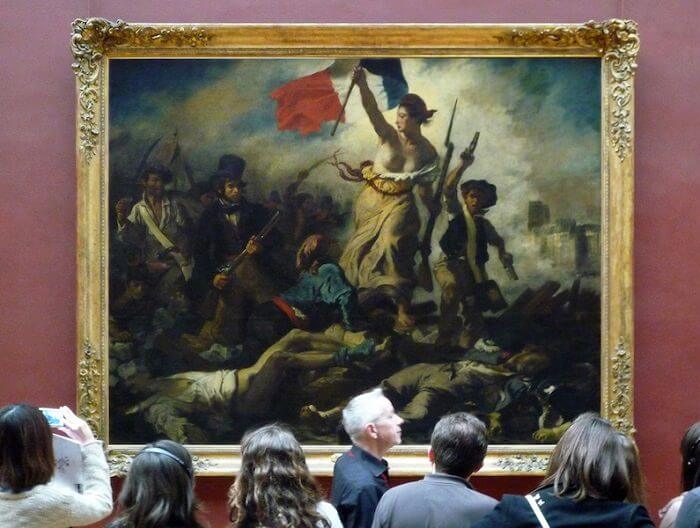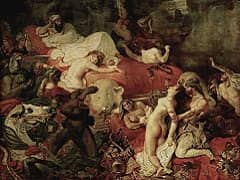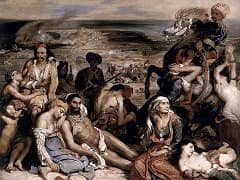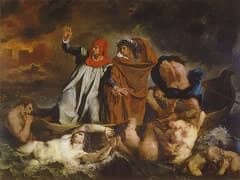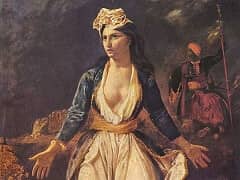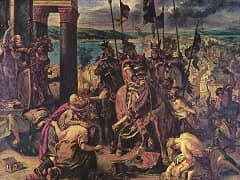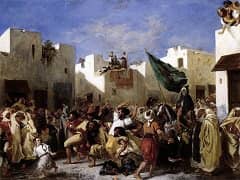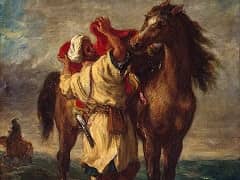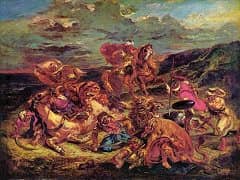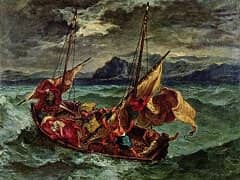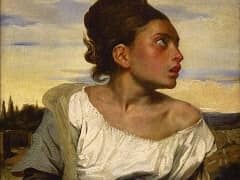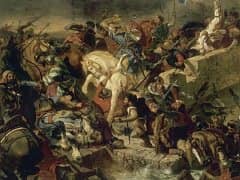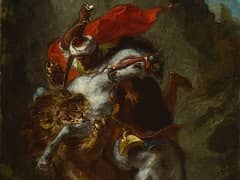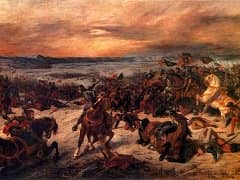Liberty Leading the People by Eugene Delacroix
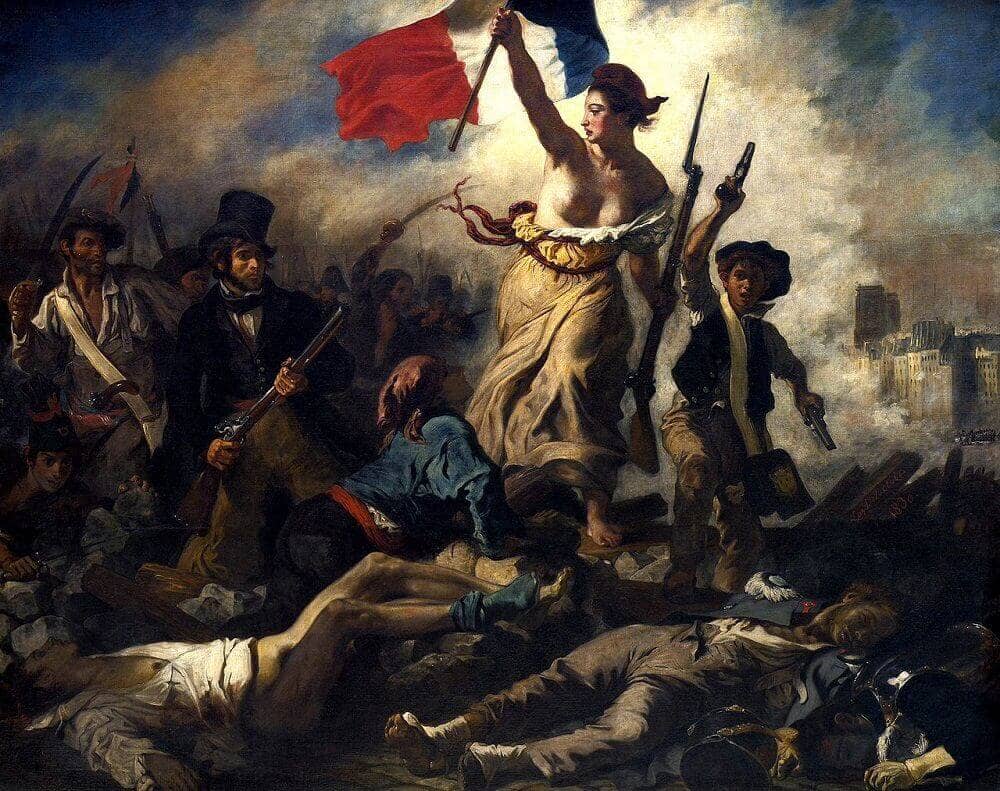
Liberty Leading the People was made in response to the political upheaval that would resulted in the overthrow of the reigning monarch, Charles X. This work was begun in October, 1830.
"I have undertaken a modern subject, a barricade ... so that, if I did not win for my country, I will at least be painting for it. . .," wrote Eugene Delacroix, on the 18th of that month, to his
brother, the general, in an unpublished letter. And, on December 6, he announced to his friend Guillemardet, "I have finished my picture, or almost...".
In the painting, the most contemporary historical reality (the revolutionary days of July 27, 28, 29, 1830) blends into allegory, in the manner of Rubens,
in this great, daring canvas centered on the immense figure of Liberty emerging half-naked from the barricade, and its plastic vigor recalls the sculptures of Michelangelo,
while the treatment of the corpses in the foreground reveals the influence of Gros.
It has been alleged that the man in the high hat is actually Delacroix, although Alexandre Dumas, in a lecture given on December 10, 1864, denied that the artist had participated in any active
way in the events of July, 1830.
A woman personifying the concept and the goddess of Liberty leads the people forward over the bodies of the fallen, holding the flag of the French Revolution - the tricolor flag which is still
France's flag today - in one hand and brandishing a bayonetted musket with the other. The figure of Liberty is also viewed as a symbol of France and the French Republic known as Marianne
